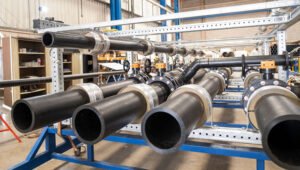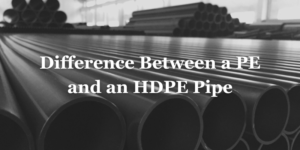What is Conductivity Sensor and Its working principle ?
A Conductivity Sensor is a device designed to measure the electrical conductivity of a solution. Electrical conductivity is a measure of a material's ability to conduct an electric current, and…
Properties and Characteristics of Polyvinylidene Fluoride (PVDF)
Introduction Polyvinylidene fluoride (PVDF) is a synthetic polymer belonging to the family of fluoropolymers. It is a high-performance plastic known for its excellent chemical resistance, thermal stability, electrical properties, and…
How CPVC Pipes are Revolutionizing the Industry
How CPVC Pipes are Revolutionizing the Industry
Georg Fischer Piping Systems
Georg Fischer Piping Systems Fluid handling is a critical component in various industries, including water treatment, chemical processing, and HVAC systems. It requires precision, quality, and reliability to ensure the…
Why are Ball Valve Made of Stainless Steel
Introduction Stainless Steel Ball valve: In the intricate dance of fluid control mechanisms, the stainless steel ball valve emerges as a stalwart, a testament to metallurgical ingenuity. Beyond its apparent…
What are the Advantages of Diaphragm Valves?
Introduction Advantages of Diaphragm Valves. Diaphragm valves might not always be in the spotlight, but they play a pivotal role in various industries where precise control of fluids is paramount.…
Different Types of Valve used in Piping – A Complete Guide of Pipe Valve
Introduction Different Types of Valve used in Piping. This article delves into the categorization of valves and their respective roles. To kick things off, let's begin with a definition of…
What is the Difference Between a PE and an HDPE Pipe?
Introduction Difference Between a PE and an HDPE Pipe. When we delve into the world of plumbing and piping systems, one thing becomes abundantly clear – the choice of materials…
- Go to the previous page
- 1
- 2
- 3
- 4
- 5
- 6
- 7
- 8
- …
- 19
- Go to the next page










